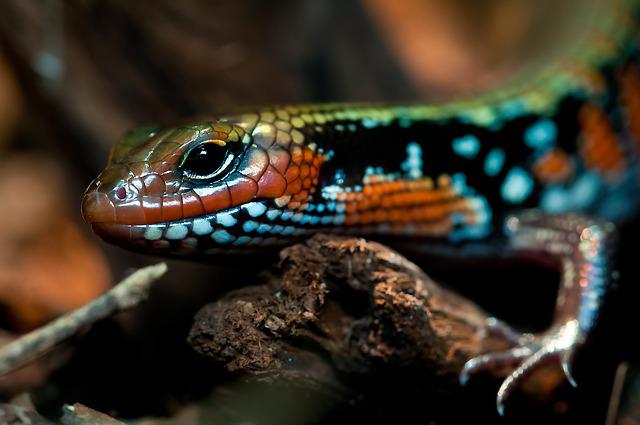There is a lot of misinformation out there when it comes to reptile heating. Some people believe that all reptiles need a heat lamp in order to survive. This is not true! In this blog post, we will discuss the truth about reptile heating and dispel some of the myths that are floating around. We will also provide tips on how to keep your skink’s environment healthy and comfortable.
Introduction
As a general rule, skinks do not need a heat lamp. These lizards are native to warm climates and do not do well in cooler temperatures.
However, there are a few exceptions. Some species of skink, such as the blue-tongued skink, require a basking spot that is between 85 and 95 degrees Fahrenheit. Without this source of heat, they can become ill or even die.
If you are keeping a skink as a pet, it is important to research the specific care requirements of your species. In most cases, however, a heat lamp will not be necessary.
The Truth About Reptile Heating
When it comes to reptile heating, there are a lot of myths and misconceptions. Some people believe that reptiles should be kept in warm environments at all times, but this is actually not the case. In fact, reptiles need periods of both warmth and coolness to stay healthy.
During the day, they rely on warm basking spots to raise their body temperature. At night, they need cooler temperatures to help them digest their food properly. As a result, it is important to provide your reptile with a temperature gradient that offers both warm and cool areas.
Misconceptions
Another common misconception is that reptile heating pads are the best way to heat your pet’s enclosure. While pads can be helpful, they should not be used as the sole source of heat.
Pads can dry out the air in your reptile’s enclosure, making it difficult for them to breathe. In addition, they can create hot spots that can burn your reptile if they get too close.
Instead, it is best to use a combination of heat lamps and pads to create a well-rounded heating system. By following these tips, you can keep your reptile healthy and happy for years to come.
Tips for Keeping Your Skink’s Environment Healthy and Comfortable
As any reptile lover knows, skinks make great pets. They are relatively low-maintenance, and their bright colors add a touch of fun to any home. However, skinks do require some special care to stay healthy and comfortable. Here are a few tips to help you create the perfect environment for your pet skink:
- 1. Skinks like it warm, so make sure your home is well-heated. An easy way to do this is to use a basking lamp to create a warm spot for your skink to lounge in. Just be sure not to place the lamp too close to your skink’s hiding spots, as they like to cool down occasionally as well.
- 2. Skinks need a lot of humidity, so make sure their habitat is always well-ventilated. You can also mist their enclosure regularly with a water bottle or sprayed water from a sink.
- 3. A diet of insects is essential for skinks, so make sure you are feeding them a variety of live foods. This includes crickets, mealworms, and other small insects. You can also offer the occasional treat of chopped vegetables or fruit.
By following these simple tips, you can create the perfect habitat for your skink.
How to Set Up a Proper Habitat for Your Skink
A proper habitat is essential for the health and wellbeing of your skink. Here are some important factors to consider when setting up your skink’s home:
- Temperature: Skinks are tropical animals and need a warm, humid environment. A temperature between 75 and 85 degrees Fahrenheit is ideal.
- Humidity: humidity levels should be kept between 50 and 60%. You can achieve this by misting the habitat regularly or using a reptile fogger.
- Lighting: Skinks need UVB lighting to help them absorb calcium and vitamin D3. Be sure to position the light so that your skink can bask in it for several hours each day.
- Substrates: Skinks like to burrow, so a substrate that allows for digging is ideal. Reptile bark, Cypress mulch, or Eco Earth are all good choices.
- Water: Freshwater should be available at all times. A shallow dish or water bottle with a drip may be used.
By providing your skink with a proper habitat, you can help ensure its long-term health and happiness.
What to Do if Your Skink Gets Sick
If your skink falls ill, the first thing you should do is take it to the vet. Reptiles are very sensitive to changes in their environment, and even a small difference can make them sick.
A veterinarian will be able to determine what is wrong and recommend the best course of treatment. If your skink has a bacterial infection, for example, they may prescribe antibiotics. If your skink has a viral infection, it will likely need to be quarantined from other animals.
In either case, it is important to follow your veterinarian’s instructions carefully to ensure that your skink makes a full recovery.
Conclusion Do skinks need a heat lamp?
In conclusion, skinks do not necessarily need a heat lamp. While they do prefer warm climates, they are able to adapt to a range of temperatures. In fact, providing a heat lamp can actually be harmful to skinks, as it can dry out their skin and cause overheating. If you are keeping skinks as pets, it is best to provide a warm hiding spot for them to retreat to when they need it, but otherwise, let them enjoy the cooler temperatures of your home.




